Jaguar I-Pace vs VW ID.4 – Which car suits you better?
Two cars, one duel: Jaguar I-Pace meets VW ID.4.
Which one wins in performance, efficiency and value for money? Find out now!
Costs and Efficiency: Looking at overall running costs, both models reveal some interesting differences in everyday economy.
VW ID.4 has a convincingly advantage in terms of price – it starts at 34600 £, while the Jaguar I-Pace costs 79200 £. That’s a price difference of around 44628 £.
In terms of energy consumption, the advantage goes to the VW ID.4: with 15.60 kWh per 100 km, it’s decisively more efficient than the Jaguar I-Pace with 25.20 kWh. That’s a difference of about 9.60 kWh.
As for range, the VW ID.4 performs a bit better – achieving up to 569 km, about 100 km more than the Jaguar I-Pace.
Engine and Performance: Power, torque and acceleration say a lot about how a car feels on the road. This is where you see which model delivers more driving dynamics.
When it comes to engine power, the Jaguar I-Pace has a somewhat edge – offering 400 HP compared to 340 HP. That’s roughly 60 HP more horsepower.
In acceleration from 0 to 100 km/h, the Jaguar I-Pace is a bit quicker – completing the sprint in 4.80 s, while the VW ID.4 takes 5.40 s. That’s about 0.60 s faster.
In terms of top speed, the Jaguar I-Pace performs barely noticeable better – reaching 200 km/h, while the VW ID.4 tops out at 180 km/h. The difference is around 20 km/h.
There’s also a difference in torque: Jaguar I-Pace pulls barely noticeable stronger with 696 Nm compared to 679 Nm. That’s about 17 Nm difference.
Space and Everyday Use: Cabin size, boot volume and payload all play a role in everyday practicality. Here, comfort and flexibility make the difference.
Both vehicles offer seating for 5 people.
In curb weight, VW ID.4 is slightly lighter – 1975 kg compared to 2226 kg. The difference is around 251 kg.
In terms of boot space, the Jaguar I-Pace offers a bit more room – 638 L compared to 543 L. That’s a difference of about 95 L.
In maximum load capacity, the VW ID.4 performs hardly perceptible better – up to 1575 L, which is about 122 L more than the Jaguar I-Pace.
When it comes to payload, VW ID.4 somewhat takes the win – 551 kg compared to 444 kg. That’s a difference of about 107 kg.
Who comes out on top?
Overall, the VW ID.4 shows itself to be outperforms in nearly all aspects and secures the title of DriveDuel Champion.
It convinces with the more balanced overall package and proves to be the more versatile choice for everyday use.

VW ID.4
VW ID.4 Video
Jaguar I-Pace
The Jaguar I-Pace represents a remarkable fusion of cutting-edge electric performance and iconic British luxury. With its sleek design and spacious interior, this model redefines what one can expect from an electric vehicle in terms of style and comfort. Its impressive driving dynamics and advanced technology make it a standout choice for those looking to make a statement on the road.
details @ media.jaguar.com
@ media.jaguar.com
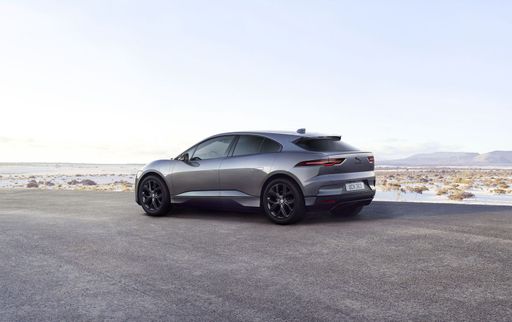 @ media.jaguar.com
@ media.jaguar.com
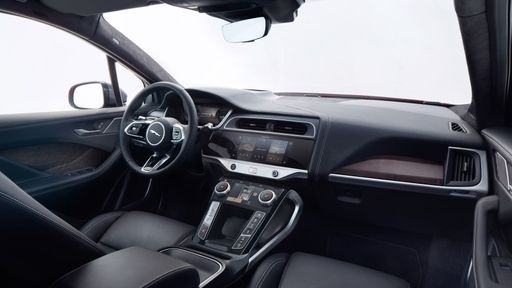 @ media.jaguar.com
@ media.jaguar.com
VW ID.4
The VW ID.4 represents Volkswagen's commitment to the electric vehicle market, combining contemporary design with sustainability. Its spacious interior and intuitive technology make it an attractive choice for those seeking comfort and innovation in an eco-friendly package. With a focus on electric performance and practicality, this car is set to be a popular option among environmentally-conscious drivers.
details @ Volkswagen
@ Volkswagen
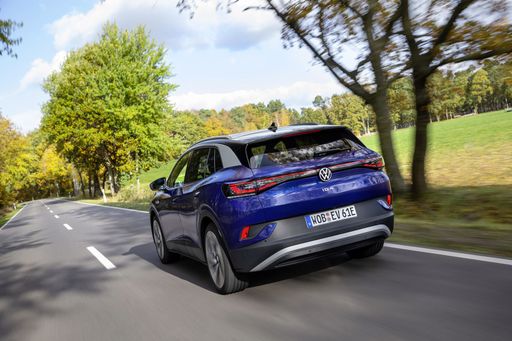 @ Volkswagen
@ Volkswagen
 @ Volkswagen
@ Volkswagen
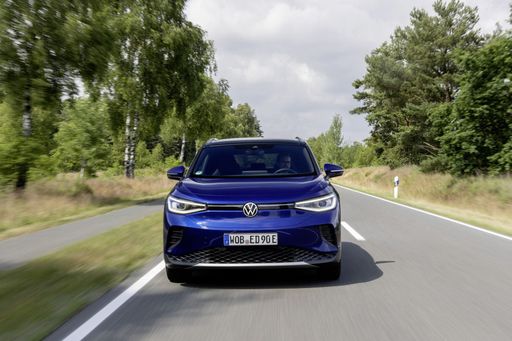 @ Volkswagen
@ Volkswagen
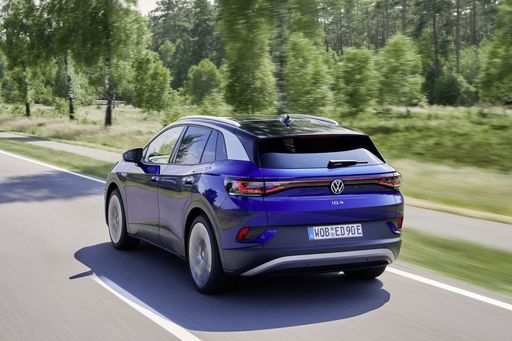 @ Volkswagen
@ Volkswagen
 @ Volkswagen
@ Volkswagen
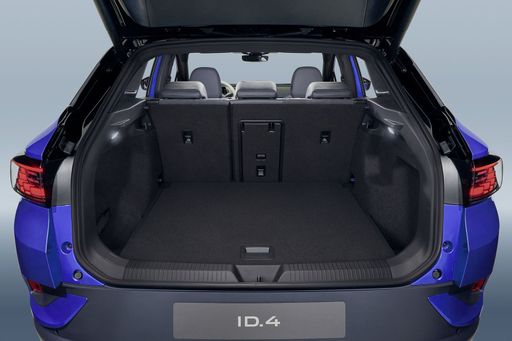 @ Volkswagen
@ Volkswagen
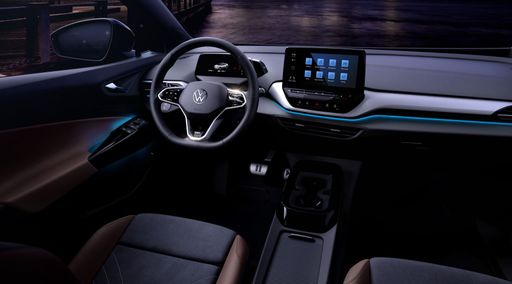 @ Volkswagen
@ Volkswagen

|

|
|
|
|
Costs and Consumption |
|
|---|---|
|
Price
79200 - 85500 £
|
Price
34600 - 47200 £
|
|
Consumption L/100km
-
|
Consumption L/100km
-
|
|
Consumption kWh/100km
25.20 kWh
|
Consumption kWh/100km
15.6 - 17 kWh
|
|
Electric Range
469 km
|
Electric Range
356 - 569 km
|
|
Battery Capacity
84.70 kWh
|
Battery Capacity
52 - 77 kWh
|
|
co2
0 g/km
|
co2
0 g/km
|
|
Fuel tank capacity
-
|
Fuel tank capacity
-
|
Dimensions and Body |
|
|---|---|
|
Body Type
SUV
|
Body Type
SUV
|
|
Seats
5
|
Seats
5
|
|
Doors
5
|
Doors
5
|
|
Curb weight
2226 kg
|
Curb weight
1975 - 2248 kg
|
|
Trunk capacity
638 L
|
Trunk capacity
543 L
|
|
Length
4682 mm
|
Length
4582 - 4584 mm
|
|
Width
2011 mm
|
Width
1852 mm
|
|
Height
1566 mm
|
Height
1619 - 1634 mm
|
|
Max trunk capacity
1453 L
|
Max trunk capacity
1575 L
|
|
Payload
444 kg
|
Payload
511 - 551 kg
|
Engine and Performance |
|
|---|---|
|
Engine Type
Electric
|
Engine Type
Electric
|
|
Transmission
Automatic
|
Transmission
Automatic
|
|
Transmission Detail
Reduction Gearbox
|
Transmission Detail
Reduction Gearbox
|
|
Drive Type
All-Wheel Drive
|
Drive Type
Rear-Wheel Drive, All-Wheel Drive
|
|
Power HP
400 HP
|
Power HP
170 - 340 HP
|
|
Acceleration 0-100km/h
4.80 s
|
Acceleration 0-100km/h
5.4 - 9 s
|
|
Max Speed
200 km/h
|
Max Speed
160 - 180 km/h
|
|
Torque
696 Nm
|
Torque
310 - 679 Nm
|
|
Number of Cylinders
-
|
Number of Cylinders
-
|
|
Power kW
294 kW
|
Power kW
125 - 250 kW
|
|
Engine capacity
-
|
Engine capacity
-
|
General |
|
|---|---|
|
Model Year
2023
|
Model Year
2023 - 2025
|
|
CO2 Efficiency Class
A
|
CO2 Efficiency Class
A
|
|
Brand
Jaguar
|
Brand
VW
|
What drivetrain options does the Jaguar I-Pace have?
Available configurations include All-Wheel Drive.
The prices and data displayed are estimates based on German list prices and may vary by country. This information is not legally binding.
